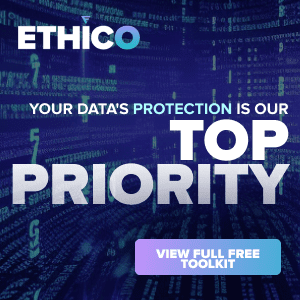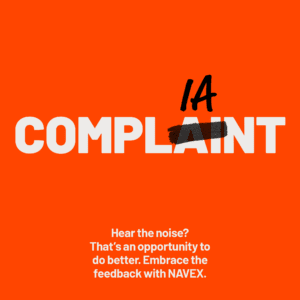The traditional decades-old labor model has been under pressure for some time, and it’s already being supplanted within a growing number of companies. Protiviti’s Jim Deloach discusses why directors should understand these developments and their impact on the competitive talent landscape and labor market.
The so-called “war for talent” has been waged and chronicled for so long that reference to it has become trite, despite its vital importance to every organization. A top-of-mind risk for a long time, the conflict has become increasingly complex and even more competitive as demographics shift, new technological capabilities emerge, labor markets tighten and the pool of needed talent in critical areas such as data science, digital and other innovation-enabling capabilities falls short of demand. As these disruptions alter traditional labor models, it is clear that today’s organizations are being forced to cope with a future that is arriving fast.
Nearly 30 years ago, Charles Handy introduced the idea of the “shamrock organization.” Just as the most common clover leaf has three leaves, the organization consists of three components:
- a “professional core” of well-qualified, hard-to-replace, and highly compensated leaders, managers and technicians;
- a “contractual fringe” of self-employed individuals and specialized organizations that provide essential capabilities to perform work on a project-by-project or outsourced basis; and
- a “contingent workforce” of flexible, part-time workers whose employment is temporary and scaled up and down to address peak staffing periods arising from events and developments such as an ERP upgrade, unusual M&A activity, major business process changes or dramatic shifts in demand for the company’s products and services.[1]
The second and third leaves of the shamrock have grown larger over time and continue to grow. For example, exponential growth in the contractual fringe over the last 30 years has been driven by the need for the professional core to focus on what really matters (e.g., the customer, external megatrends, critical strategic decisions and monitoring performance, among other things.
All other essential activities are considered non-core and are, therefore, subject to offshoring, outsourcing or assignment to a provider of managed services or business process as a service (BPaaS) in which the core specifies the results it wants but does not concern itself with the methods for achieving those results so long as they are within the bounds of ethical, responsible business behavior. Bottom line: This component of the shamrock organization has been functioning and evolving for a long time, as the increasing mobility of talent and availability of high-quality service organizations are enhancing its value to the core.
The contingent workforce also taps into the so-called sharing economy and is actively supported through staffing agencies, independent freelance workers, online staffing and crowdsourcing. As the environment transitions from the age of physical locations, people and infrastructure to the tools of the digital age, technology will enhance the scalability and muscle offered by the contingent workforce as well as add additional capabilities.
As we can see, over the last 30 years, demographic, social and technological market forces have shaped the components of Handy’s model in interesting ways. Below, we discuss the ramifications of the labor model to executive management and the board, with emphasis on two of the three dimensions of the evolving labor model – skills and scale. My article next month will discuss the third dimension, the implications of technology on the labor model, as “digital labor” offers a higher level of performance than that which is typically expected of human beings.
The concept of the small, highly paid and highly capable professional core has been especially embraced by the technology sector. The underlying philosophy is to focus on the delivery of mission-critical services, with other operational functions – particularly those that are not customer-facing – sourced elsewhere. However, this is not limited to the technology industry. Today, slightly more than one-third of the U.S. workforce consists of freelancers; by 2027, the majority of the workforce will be freelancing.[2] Thus, many companies are striving to establish and manage a more complex talent ecosystem that extends beyond traditional organizational boundaries.
The shamrock approach has weaved its way into many business functions and is now becoming increasingly attractive to the back office. For example, the increased availability of talented, accomplished finance and accounting professionals today makes the model’s “contingent workforce” leaf more feasible to finance executives. Trusted third-party partners who specialize in human resources (HR) management have access to a large pool of experienced, vetted specialists and can qualify, screen, hire and manage these resources in a cost-effective manner. With this proven access, the professional finance core is able to expand the size of this leaf with confidence that hired resources can deliver to its specifications.
Fundamental Questions About Organizing Work and the Shamrock in its Contemporary Form
- Is it core (e.g., strategic to the execution of the business model)?
- If it is not core, can we outsource it?
- Are there cost-effective labor model options that offer us flexibility?
- Alternatively, can we give it to a contractor or freelance worker?
- Can we articulate clearly the results we want?
- Are there contractors or freelancers who can do it better than we can?
- Who can help us find them?
- If modifications to the labor model are needed, what’s the business case that compels us to change it (g., reduce costs, improve process effectiveness, compress cycle time and/or manage sudden spikes in workloads from such changes as a major systems upgrade or new regulatory requirements requiring an influx of subject-matter expertise in a short period of time)?
These questions do not consider the effects of digital labor, which, as noted earlier, we’ll consider in next month’s article.
As implied by the above questions, the traditional linear corporate career path is giving way to the challenges posed by job mobility, worker freedom, reskilling, increased participation in an on-demand economy and the security of diversified income sources. As organizations adapt to the new normal of constant disruption of business models, the workforce is likewise adapting to a shifting labor model. This transition is paving the way for adaptable and creative people to embrace the new realities of the digital era by either (a) functioning effectively in a collaborative professional core that supports problem-solving and innovation through high-performance teams or (b) operating out of the collaborative freelance economy to complete specific tasks or projects on demand.
Amid these unmistakable trends, the question arises as to the role of executives and directors in ensuring that the organization is making appropriate adjustments as the world of work changes. As with anything else involving the future, clear answers are elusive. However, there are six questions executives and directors should be asking and thinking about as they work with HR and others:
Questions to Address the Realities of a Transforming Workplace
- Are we monitoring the demographic, social and technological trends affecting the labor model? Shifts in demographics, the availability of skilled talent and the effect of technology on work, jobs, wages and society at large should be assessed continuously over time by both C-suite executives and board members.
- How do we obtain insights as to market trends affecting the labor model? Relying on multiple intelligence sources is a smart play in all aspects of executive management’s and the board’s oversight, particularly this one.
- Given the evolving market trends, do we have processes in place to evaluate their implications to our labor model? For example, have we thought about separating non-core activities from the essential tasks of operating the business with the objective of improving the focus on mission-critical activities? What are the benefits and costs to the organization if any or all of these non-core tasks and functions were performed by external workers or firms? If the business case dictates action, what specific changes should we make to our labor model (g., how, why and over what time frame should we transform the model)? What possible actions by competitors could alter the talent landscape within the industry if we decide not to act?
- Do we consider the economics, opportunities and risks associated with outsourcing non-core activities? Providers of managed business services and BPaaS can offer powerful options, particularly if the activities in question are not associated with strategic capabilities underlying the company’s core competencies and the provider can perform the activities better at a lower cost, while also bringing in specialized talent and expertise not available in the organization. It boils down to tending to the knitting and achieving focus (e., “do what we’re good at doing).”
- Have we considered applying all three elements of the shamrock model? By organizing the workforce into these three categories, management is better positioned to hire, develop and manage each labor pool in an optimal manner. Also, in the digital age, management can focus on understanding and harnessing technology’s role in supporting and shaping each pool. Accordingly, the unique challenges of each of these labor segments must be managed effectively.
- Do we have the right HR partner? As management plans process improvements and addresses the resource needs to support key initiatives, important talent management questions arise:
- What specific forms of expertise are needed? For example, an ERP implementation requires finance professionals with technology and change management skills. An acquisition requires integration experience. A digital transformation initiative requires data scientists and innovative people.
- How do we resource these efforts? Do we reassign internal staff, hire interim staff, invest in consulting services or undertake some combination of these approaches? The key is to be able to scale up and down the necessary staffing – quickly and effectively – to complete specific tasks and projects and achieve the desired results.
- Does a traditional outsourcing relationship meet this need? Can a service organization do the job more cost effectively than we can?
- Do we need help in deploying individuals and firms on the contractual fringe? Should we work with an external HR partner who can assist with staffing major initiatives quickly, combating competition for high-in-demand skills and strengthening relationships with part-time and interim specialists in a cost-effective manner?
With respect to question six, as companies build the enterprise’s talent ecosystem, they may unleash significant value through an external partner that can offer new capabilities and solutions to perform higher-value work due to a deep, nuanced knowledge of the company’s people, processes, technology and culture.
The Evolution of the Traditional Labor Model
In summary, the traditional labor model is evolving to a talent ecosystem in which much, if not most, of the organization’s work will not be done by full-time employees. The pace of this evolution is such that it could very well make the traditional HR model obsolete over the next several years, with significant implications for how companies shape their talent strategies.
The economic drivers, technological advancements and shifting generational expectations affecting the traditional staffing model are forcing companies to rethink how they approach staffing and talent development. To play a catalytic role in stimulating this thought process, senior executives and boards of directors should be cognizant of the issues pertaining to changing workplace dynamics and their implications for the organization’s long-term viability.
[1] The Age of Unreason, Charles B. Handy, 1989, pages 90–101.
[2] “4 Predictions for the Future of Work,” Stephanie Kasriel, World Economic Forum, December 5, 2017, available at www.weforum.org/agenda/2017/12/predictions-for-freelance-work-education/.



 Jim DeLoach, a founding
Jim DeLoach, a founding 






